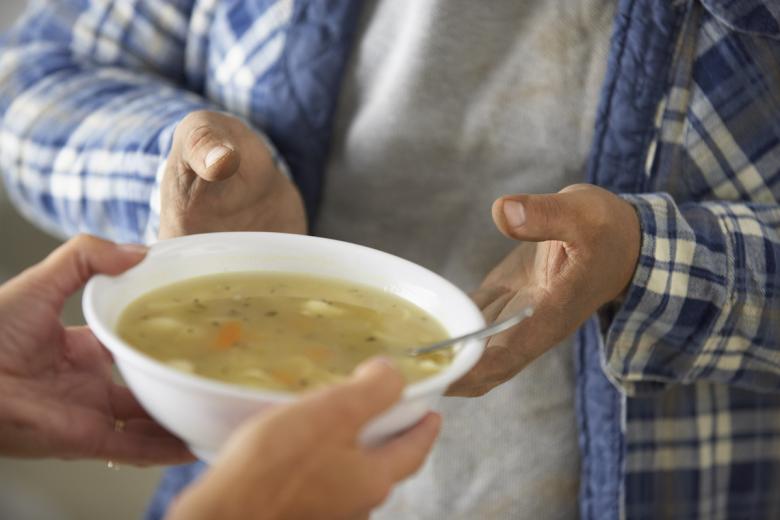1 11
1 11
The Feeding America nationwide network of 200 food banks and 60,000 food pantries secures and distributes more than 3 billion meals each year through food pantries and meal programs. Resources at the Feeding America website include a food bank directory.
The Bill Emerson Good Samaritan Food Donation Act is a federal law enacted in 1996 that protects food donors from liability.
Hunger at Home provides a model for working with the hospitality industry to donate prepared meals and fresh food. In partnership with Team San Jose, the San Jose, Calif., convention bureau, it helps organize food donations from the San Jose Convention Center (pictured) as well as area Hilton, Marriott, Fairmont, DoubleTree, and Dolce hotels.
The Roadmap to Reduce U.S. Food Waste, released earlier this year, is the first-ever national economic study and action plan to reduce food waste at scale. It was created by ReFED, a collaboration of more than 30 business, nonprofit, foundation, and government leaders committed to reducing food waste in the U.S.
The study determined that food recovery can increase by 1.8 billion meals annually, nearly doubling the amount of meals rescued today and diverting 1.1 million tons of waste. To do this, according to ReFED, the food recovery ecosystem requires three pillars to scale: education for businesses, enabling policy, and efficient use of transportation and cold storage. The policy piece will involve legislation, including the maintenance and expansion of tax incentives for business donations and the standardization of food handling safety regulations.
When celebrity chef Tom Colicchio heard the statistic that 70 billion pounds of food in the U.S. is wasted every year, he co-founded Food Policy Action, dedicated to lobbying U.S. lawmakers to pursue legislation that reduces waste, promotes nutrition, and fights hunger. Last December, Congresswoman Chellie Pingree (D-ME) introduced the Food Recovery Act, which, among other things, will expand and extend tax deductions for retailers and restaurants donating high-quality food to organizations serving people who are food insecure and also will strengthen the Good Samaritan Food Donation Act.
The New York Knicks NBA franchise and the New York Rangers NHL franchise at Madison Square Garden donated 13,585 pounds of leftover food during their 2015/2016 season. Rock and Wrap It Up!, an “antipoverty thinktank” that matches agencies and food donors, helped them do it.
Hotels can consider joining the Environmental Protection Agency’s Food Recovery Challenge, in which organizations pledge to improve their sustainable food management practices by following the food recovery hierarchy (see above: first, reduce the surplus food generated; second, feed hungry people). Any business can join.
Transfernation is a nonprofit organization that has so far rescued 12,000 pounds of food from corporate luncheons, galas, and conferences in New York City. In collaboration with SocialEffort, Transfernation recently released a new app platform that it says “operates like Uber for food rescue,” enabling real-time food donation by allowing event planners to send out push notifications to volunteers based on location, proximity, and interest.
There are many mobile apps now (and more launching all the time) that aim to connect food donors with food recipients. Some specialize in certain types of donations, recipients, foods, or overall donation programs. Check the various websites to find those that could help with your particular needs. The aim of these apps is to make donation as easy as possible, providing pick up and delivery of the food. This is just a sampling:
Waste No Food, based in Woodside, Calif.
Spoiler Alert, based in Boston
Zero Percent, based in Chicago
Copia, based in San Francisco
Community Plates, based in Norwalk, Ct.
ChowBank, based in Des Moines, Iowa
RecyclingWorks in Massachusetts, a recycling assistance program designed to help businesses and institutions maximize recycling, reuse, and composting opportunities, worked with state and local health officials to put together a Food Donation Guidance document, which could be used as a template for other cities or states.
The Food Waste Reduction Alliance is a collaborative effort of the Grocery Manufacturers Association, the Food Marketing Institute, and the National Restaurant Association. The FWRA’s mission is to reduce the volume of food waste sent to landfill by addressing the root causes of waste, and securing pathways to donate or recycle unavoidable food waste. Case studies available.

